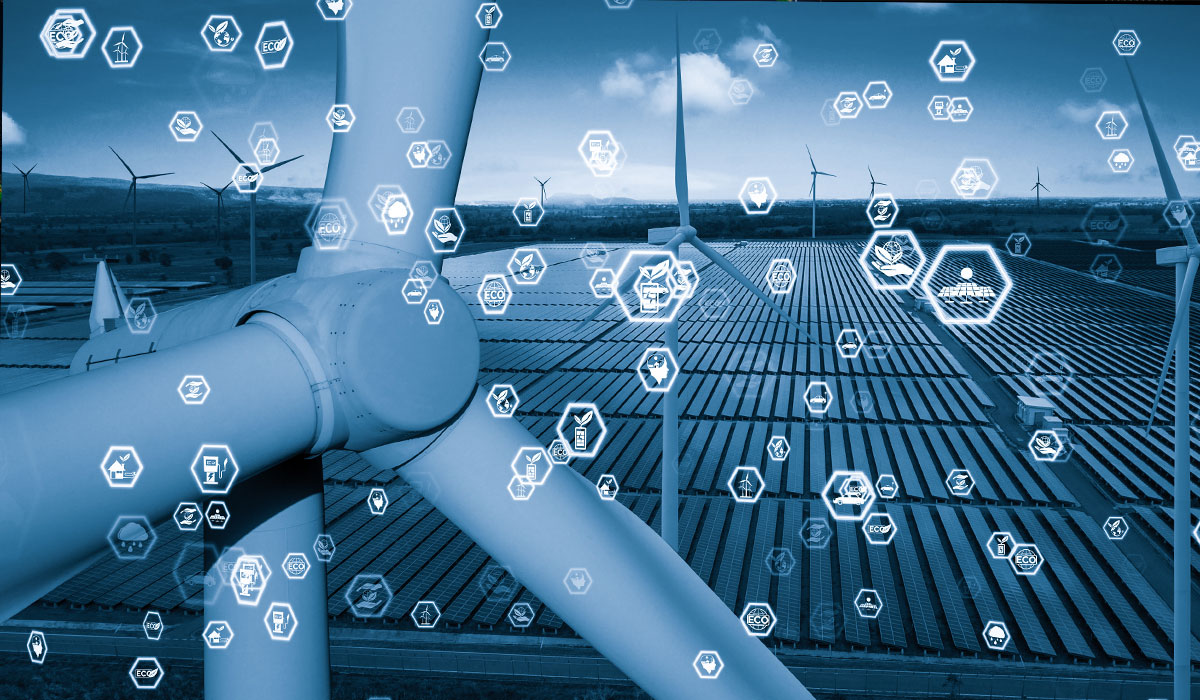

AI and machine learning have the capability of transforming the renewable energy industry. By leveraging the power of AI, power companies can get better forecasts, manage their grids and schedule maintenance.
A sensor on a drone to measure greenhouse gasesTotalEnergies and a CNRS research laboratory are developing a new system for real-time quantification of CO2 and methane emissions using a laser diode spectrometric sensor capable of identifying the spectral fingerprint of a molecule. The system is equipped with a laser beam that propagates through an air sample, inside which the presence of CO2 and methane causes the absorption of infrared radiation. This absorption of the signal between the laser and the detector then allows to calculate the concentration. Thanks to AI, this drone could soon move autonomously. The machine learning would allow it to change its driving profile according to the measures it detects in real time, so that the 3D representation of the plume and its evolution in time are as accurate as possible. Find out more | ||
How to optimize geothermal energy thanks to artificial intelligenceIn order to avoid any additional costs when sizing and operating a geothermal installation in a logistics warehouse, Accenta uses advanced artificial intelligence models to simulate thousands of possible options before finding the optimal sizing at the lowest cost and optimizing the operation of the installations. The algorithms allow to anticipate weather conditions and learn from the life of the building to adapt the operation, but also the cost of electricity, its carbonation... Find out more | ||
How is ENGIE Green using AI to manage its renewable energy generation assets?To prepare future developments of the Darwin Project, ENGIE Green teams are working with an ecosystem of contributors in artificial intelligence and data science within the ENGIE group, such as the ENGIE Crigen and ENGIE Laborelec R&D centers or the R&D engineering teams. Thanks to a Machine Learning model, DARWIN is able to highlight an underperformance if a significant difference between the expected and the observed electrical power is detected. Dive into the functioning of the DARWIN platform. | ||
Achieving sustainable rooftops (Green & Solar powered) by utilising novel AI-powered toolResearchers at the National University of Singapore have established an Artificial Intelligence-powered tool to map the potential of sustainable rooftops globally. An automated tool that utilises satellite images to study how rooftops to figure out how underutilised rooftop spaces could contribute to tackling climate change, as well as aiding food production efforts. Find out more | ||
AI-powered bidding platform for Australia’s biggest solar farmThe operators of Australia’s largest solar farm have turned to a software-based bidding solution as they seek to optimize dispatch and manage the facility’s market trading of the 333 MW Darlington Point Solar Farm in southwestern New South Wales. Find out more |
Read the article of Hadi Ganjineh is Head of IT, Integrated Tech & Innovation at Super Energy Corp.
Companies can use AI to help protect the environment by, for example, monitoring their GHG emissions or assessing the environmental impacts of their activities to make adjustments to reduce future emissions. But AI also has its own carbon footprint. Let's try to better understand the impacts of AI.